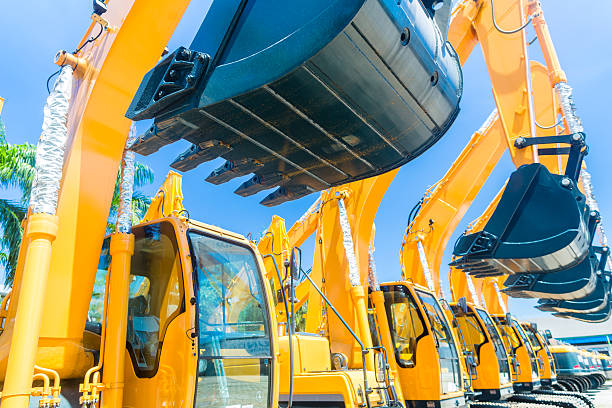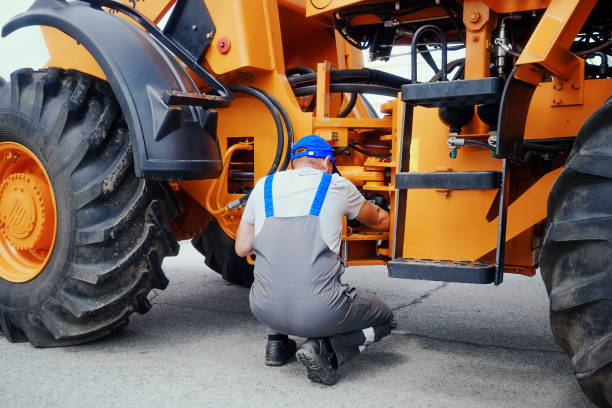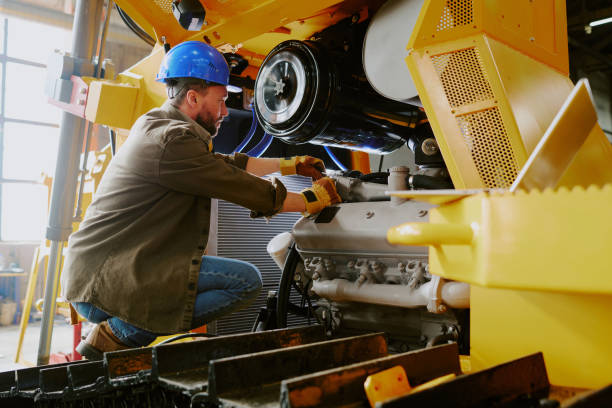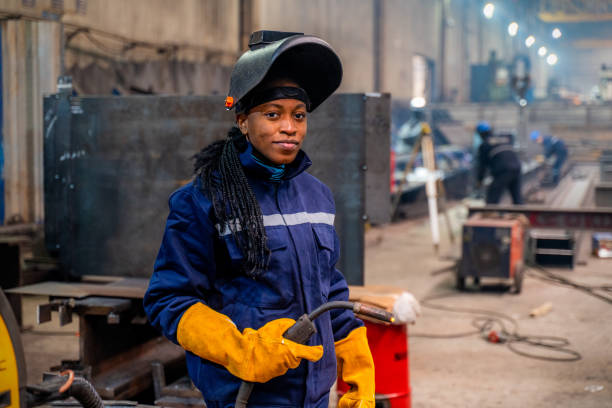Construction equipment represents a significant investment for any contractor or business owner, and its longevity plays a pivotal role in determining the success of ongoing operations.
Whether excavators, cranes, bulldozers, or any other heavy machinery, ensuring your construction equipment remains in top condition throughout its service life can significantly enhance productivity, reduce costs, and prevent unexpected downtime.
However, maintaining and extending the lifespan of construction machinery requires more than occasional check-ups. It demands strategic planning, regular inspections, professional training, and proactive maintenance practices.
In this detailed guide, we’ll explore proven strategies for maximizing the lifespan of construction equipment, from regular maintenance to the importance of training and high-quality parts. Whether overseeing a fleet of machinery or managing a single unit, these insights will help ensure your equipment performs at its peak for years.

1. The Importance of Regular Maintenance and Inspections
Regular maintenance is essential to keeping your construction equipment running smoothly. Construction machinery, like any complex machine, is subject to wear and tear over time. If not properly maintained, small issues can escalate into significant problems that are costly and time-consuming to fix. By adhering to a routine maintenance schedule, you can detect minor issues before they become major repairs.
Key Maintenance Tasks for Construction Equipment:
- Lubrication: Ensure that moving parts such as hinges, joints, and bearings are properly lubricated to prevent friction and wear.
- Fluid Checks and Changes: Regularly check and replace engine oil, hydraulic fluid, coolant, and transmission fluid. Low or old fluids can significantly reduce machinery’s performance and lifespan.
- Filter Replacement: Filters, especially air, oil, and fuel filters, must be replaced periodically to keep the engine and components clean and functioning efficiently.
- Tire Inspections: Tires should be inspected for wear, cracks, and proper inflation. Underinflated tyres can cause excessive wear, while overinflated tyres can increase the blowout risk.
Staying on top of these regular maintenance tasks not only helps extend the life of your equipment but also ensures optimal performance and safety on the job site. Failure to maintain equipment properly can lead to costly repairs, project delays, and even workplace accidents.
2. Investing in Proper Operator Training
One of the most effective ways to prolong the life of your construction equipment is by investing in proper operator training. Incorrect use of machinery can lead to premature wear, mechanical failures, and costly repairs. Properly trained operators are better equipped to use the equipment within its designed parameters, reducing unnecessary stress on the machine.
Benefits of Training Operators:
- Prevention of Operator Errors: Training ensures operators understand how to handle equipment correctly, which minimizes the risk of damaging the machinery.
- Knowledge of Load Limits: Each machine is designed to handle a specific load capacity. Operators must know these limits to prevent overloading and overstraining the equipment.
- Efficient Use of Resources: Well-trained operators use machinery more efficiently, saving fuel and reducing wear and tear on components.
By implementing a comprehensive training program, you can significantly reduce the risk of costly mistakes and help ensure that your construction equipment remains in peak operating condition for longer. Additionally, operators familiar with the equipment’s capabilities and limitations are better at detecting early signs of problems, enabling faster troubleshooting and repairs.
3. Implementing a Preventive Maintenance Program
A preventive maintenance (PM) program is a proactive strategy that involves regular checks and servicing to prevent breakdowns before they happen. This approach is particularly important for construction equipment, which often operates in harsh and demanding conditions.
Components of a Preventive Maintenance Program:
- Scheduled Inspections: Regularly scheduled inspections, based on the manufacturer’s recommendations and the amount of usage, can help identify potential issues before they cause serious damage.
- Lubrication and Fluid Management: As mentioned earlier, properly lubricating the machinery and maintaining fluid levels are essential for preventing damage to internal components.
- Component Checks: Inspect critical parts such as hydraulic systems, exhaust systems, and electrical wiring for signs of wear or malfunction.
- Cleaning: Dirt, debris, and dust can accumulate on machinery during operation, causing overheating or mechanical failure. Cleaning the equipment regularly helps maintain its performance.
Implementing a preventive maintenance program allows you to stay ahead of potential issues and avoid costly repairs. Additionally, this approach helps extend the equipment’s lifespan by ensuring it is always running at its optimum capacity.

4. Monitoring Equipment Usage and Performance
Regular monitoring of equipment usage is crucial for identifying performance issues early and ensuring that machinery is not being overused or underutilized. Tracking how often a piece of equipment is used, its fuel consumption and wear patterns can provide valuable insights into when it may be time to replace or retire a unit.
Key Metrics to Monitor:
- Operating Hours: Monitoring the number of operating hours per machine can help you track when maintenance is due and when equipment may be reaching the end of its useful life.
- Fuel Consumption: A sudden increase in fuel consumption may indicate that the equipment is operating inefficiently and requires servicing.
- Performance Patterns: Monitor any decline in performance, such as reduced lifting capacity, slower hydraulic systems, or decreased mobility. These issues could indicate the need for repairs or upgrades.
Tracking these metrics allows for data-driven decisions about equipment usage and helps ensure that each unit operates efficiently. This also lets you decide whether to replace or continue using ageing equipment.
5. Using Quality Parts and Fluids
Cutting corners with cheap parts or low-quality fluids is never a good idea for construction equipment. The components and fluids you use in your machinery can significantly impact its longevity and performance. Always choose high-quality parts and manufacturer-recommended fluids to keep your equipment in excellent condition.
Why Quality Matters:
- Long-Term Performance: High-quality parts and fluids are designed to perform better and last longer, reducing the need for repairs and replacements.
- Preventing Premature Wear: Low-quality parts can wear out more quickly and cause damage to other components, leading to more frequent breakdowns.
- Maintaining Manufacturer’s Warranty: Using authorized parts and fluids helps ensure compliance with the manufacturer’s warranty and prevents coverage from voiding.
Investing in quality parts and fluids is essential for ensuring the reliability and longevity of your construction equipment. While it may be tempting to choose cheaper alternatives, the long-term costs of repairs and replacements will often outweigh the initial savings.
6. Proper Storage Practices
Proper storage of construction equipment is an often overlooked aspect of maintenance that plays a crucial role in extending its lifespan. Equipment left exposed to the elements is more likely to rust, corrode, or suffer damage from extreme temperatures.
Tips for Storing Equipment:
- Shelter: Store machinery in a covered, secure area to protect it from rain, snow, and sunlight. A well-ventilated storage area helps prevent moisture buildup, which can cause rust.
- Winterization: Before storing equipment for the winter, take steps to winterize it. This may include draining fluids, covering sensitive components, and adding antifreeze to prevent freezing.
- Component Protection: Cover components like exhaust pipes, electrical connections, and hydraulic systems to shield them from dirt, dust, and moisture during storage.
Proper storage practices ensure your equipment is ready when needed and prevent unnecessary damage during idle periods. This also helps preserve the equipment’s aesthetic appearance and functionality.
7. Investing in Equipment Upgrades and Replacements
Even with the best care, construction equipment will eventually end its useful life. It’s important to track the performance of your machinery and plan for upgrades or replacements when necessary. Monitoring performance and wear patterns will help you determine when to retire an old unit and replace it with a more efficient one.
Signs It’s Time to Replace Equipment:
- Diminished Performance: If the equipment’s performance has significantly declined and repairs are more frequent, investing in a replacement may be more cost-effective.
- High Maintenance Costs: If the cost of maintaining the equipment exceeds the cost of purchasing a new machine, it may be time to replace it.
- Outdated Technology: Newer equipment often comes with updated technology to improve efficiency and reduce operating costs. If your equipment is outdated, consider upgrading to take advantage of these innovations.
Planning for replacements and upgrades allows you to maintain an efficient and modern fleet of construction equipment, ensuring that your operations run smoothly.

Conclusion: Prioritizing Longevity for Maximized Profitability
Maximizing the lifespan of your construction equipment is not just about keeping the machinery in good working order—it’s also about safeguarding your bottom line. Proper maintenance, operator training, and the use of quality parts and fluids can significantly extend the lifespan of your equipment, reduce downtime, and minimize costly repairs.
By incorporating these practices into your equipment management strategy, you can ensure that your fleet of construction machinery remains productive and efficient for many years. This proactive approach helps preserve the value of your investment and enhances your business’s overall profitability and success.
As the construction industry continues to evolve, taking steps to care for your equipment today will pay off in the future. Whether working with a single piece of machinery or managing an entire fleet, the strategies outlined in this guide will help you get the most out of your construction equipment and ensure its longevity for the long haul.

